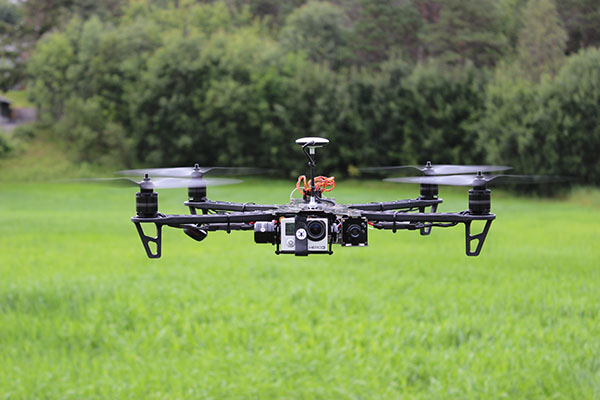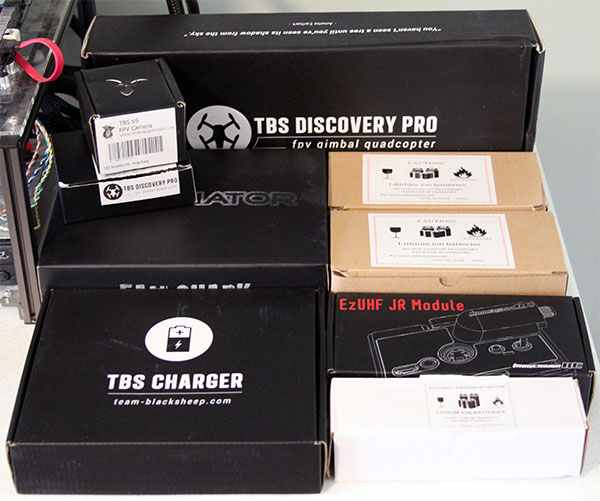Team BlackSheep Discovery Pro: Building A $3000 Quadcopter
Is it any surprise that PC enthusiasts also dabble in other technology-driven hobbies? Our editorial team recently purchased a high-end quadcopter to gauge the accessibility of first-person-view flight. Follow along as we build and critique the process.
TBS Discovery Pro: Building And Flying A Quadcopter
Do you remember the first time you built a PC? There was much reading, followed by a surge of confidence. Of course, the adrenaline probably dissipated as soon as it came time to order parts. “Is this really the hardware I need?” You hit the Checkout button anyway, hoping for the best.
All of the pieces arrived a few days later, and you arranged them on a table. One by one, you carefully unpacked each box, handling the CPU, motherboard, memory and graphics card ever so gingerly. You wore an anti-static wristband for protection and tried your best not to touch any of the surface-mount components. You felt like a doctor preparing for surgery.
Whether the process took a few hours or a few days, in between work shifts and before bed, you built your first PC. Maybe it booted up the first time you nervously pressed its power button. Or maybe, like mine, it didn’t. But after some troubleshooting, you ironed out the wrinkles and found yourself with a functional machine…which sat there telling you it needed software.
Depending on how far back that story takes you, you might have discovered the worlds of BIOS configuration, operating system setup and driver installation were learning experiences unto themselves. Nowadays it’s all a lot more streamlined. However, I remember booting DOS from a floppy disk, configuring a serial mouse input card one jumper at a time and socketing RAM chips directly onto motherboards.
Those Same Butterflies…
All of those same feelings rushed back as I researched, then shopped for, purchased and started building my first quadcopter—Team BlackSheep’s Discovery Pro.
Now, for those of you already on the multi-rotor scene, you’re thinking, “Dude, that’s way over the top for a first quad. Start small, man.” And you’re right. Pilots don’t decide they want to fly and immediately jump into 727s. But I know my way around a soldering iron, I can build PCs in my sleep and I flew R/C aircraft as a kid—all of the ingredients for a false sense of security. My interest in quads started way before Clym Montgomery wrote Multi-Rotors, First-Person View, And The Hardware You Need back in June. But his introductory story set the stage for where we are today. If you haven’t already read that piece, it’s a great place to start.
As Clym worked on his coverage, I was reading, adding items to a shopping cart, asking questions and starting over. The community of multi-rotor enthusiasts isn’t as large as the group of folks building PCs, so it can be more difficult to find solutions. Moreover, companies like Team BlackSheep are busy developing their platform, selling it and enjoying the sport. My emails to them mostly went unanswered. I’d have to figure this out on my own.
Get Tom's Hardware's best news and in-depth reviews, straight to your inbox.
After a couple of months waffling on parts, it was time to put up or shut up. Two decades ago, I nervously ordered the pieces for my first PC build. Now it was time to do the same thing for my rookie multi-rotor effort.
Placing The Order
| Team BlackSheep Discovery Pro Long Range Set | |
|---|---|
| Component | Price As Of 10/26/14 |
| TBS Discovery Pro Long Range Set | $2349.95 |
| Upgrade to Naza-M V2 | $130.00 |
| Upgrade to TBS 69 FPV Camera | $70.00 |
| Add Spare Battery | $74.95 |
| Upgrade to 4.5Ah | $25.00 |
| Upgrade Included Battery to 4.5Ah | $25.00 |
| Upgrade to Tuned VTx | $100.00No longer available; kit now includes TBS Unify VTx |
| Upgrade to Tuned VRx | $80.00 |
| Upgrade to TBS Groundstation 2.4GHz | $130.00 |
| Upgrade to 1000kV Motors | $20.00 |
| Total | $3004.90 |
I was able to buy everything from Team BlackSheep’s website, though you don’t have to do the same. There are plenty of hobby shops distributing TBS’ parts, and an even greater number selling the components manufactured by third parties. I simply took the path of maximum convenience, hoping to leverage some of the company’s expertise with compatibility on its own frame. The downside was being put at the mercy of TBS’ supply chain; it took almost a month and a half for the order to ship. To Team BlackSheeps’ credit, as the multi-rotor landscape changed during that time, it made adjustments to the components I bought. A Futaba transmitter was substituted out in favor of FrSky’s Taranis, and the difference in cost was refunded back to me. My motors were upgraded free of charge as TBS introduced its 1000kV set and ran out of the 900kV motors I had ordered. And when the gimbal motors sold out, TBS followed up my initial shipment with the parts I needed, no additional freight added. Kudos to the company's post-sales customer support.
So there I was, several weeks after placing my order, staring at a pile of boxes. I had the parts for the Discovery Pro itself, my transmitter setup, the FPV equipment, and a groundstation. It was time to reacquaint myself with the manuals and commence building.
Current page: TBS Discovery Pro: Building And Flying A Quadcopter
Next Page TBS’ Discovery Pro Gimbal Frame-
blackmagnum Sunbathers beware! On another note: 3k dollars would build an awesome gaming machine, but getting some fresh air is all good.Reply -
Shankovich A company in Toronto called DreamQii made one that's around $1000 for the kit and is modular. A much better deal IMO, and it comes with a sturdier gimbal. Can you guys review that one? Kinda want one but not so sure about the whole thing.Reply -
Bondfc11 The radio in the photos is a dead match for the JR radio I use for flying my helicopter.Reply -
g-unit1111 Pretty sweet but if I had $3,000 to spend money on something, this would be like last on my list. :lol:Reply -
qlum I have looked at quad copters quite often but every time I look I come to the same conclusion: To expensive for something I will get bored of pretty soon anyway.Reply
Anyway the last time I was nervous about something I did was when I had to solder a serial connection on a bricked router. It was a first for me but all went far far smoother then I ever expected. -
d_kuhn Soo... while this looks like a very cool drone, if you're looking at your first buy you might want to look a bit more modest... like the DJI Phantom 2 Vision+... $1300 buys you a nice quadcopter with a stabilized camera. That's a lot less $$$ to lose when you auger in on your maiden flight.Reply -
desert_beagle great article.. just expecting the delivery of my TBS Disco + Taranis today.. yes, it's expensive, but it's a lot of fun.. )Reply -
quadcopterhq Really great overview of what it is like to build your own custom quadcopter, one of the most coherent and in-depth ones I've seen so far. To be honest, all the work makes me want to just recommend buying an off-the-shelf ready-to-fly option like the DJI Phantom! Of course, this model is much more capable and for any pro the customization is necessary (and enjoyable potentially too) to be able to get the video results required.Reply
What kind of flying time does the rig have? And could you attach a larger, heavier camera if you swap in a different gimbal or are you limited to the GoPro line?


